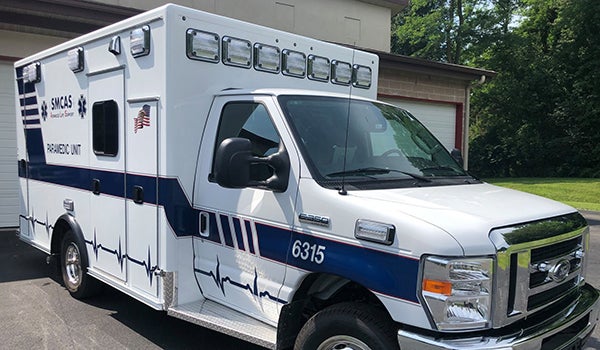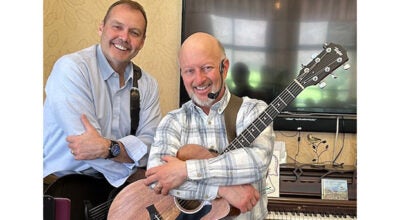City Council confirms SMCAS special assessment district
Published 12:28 pm Tuesday, September 13, 2022

- (Leader File Photo)
|
Getting your Trinity Audio player ready...
|
NILES — City leaders have made a decision on a proposed increase in assessments for the local ambulance service.
The Niles City Council voted 5-1 to confirm Southwestern Michigan Community Ambulance Service’s requested five-year step increase in the Special Assessment District rate – from $20 annually to $50 annually – during Monday’s meeting at the Niles Fire Department.
The rate will increase from $20 to $30 next year ($0.83 per month per parcel) and increase $5 per year after that until capping at $50 per year in year five. That amounts to just over $4 per month per household or parcel.
SMCAS is a non-profit, municipally-owned and operated advanced life support ambulance service that has provided 24/7 emergency response in Southwest Michigan since 1976, serving residents within the Cities of Buchanan and Niles, as well as Buchanan, Niles, Howard, Bertrand, Milton and Pokagon Townships.
The SAD will apply to all residential units, commercial parcels, industrial parcels and agricultural parcels within the city, unless such lands and premises are exempt by law from paying special assessments. Residential units include each unit in multiple family dwellings, apartments, condominiums and townhouses, and includes each pad in a mobile home or manufactured housing community.
Councilwoman Georgia Boggs was the lone dissenting voice. She implored the council to look into alternative ways to fund SMCAS.
“We have got people in Niles that are having a problem with all of the expenses that they’re having today,” Boggs said. “It’s not that SMCAS is not good, it’s just that we have to start thinking about how we can fix things in the community so people can afford it… We know that we need (SMCAS) but we need some help in our community, to help the budget so that we can better take care of our families and pay our bills and do feel good about our community.”
Some community members in attendance questioned the need for a SAD increase.
“Why isn’t (cannabis) money going towards SMACUS to begin with before taxing us,” said Kathy Zeider, of Niles. “The cannabis monies and funds should be allotted to SMCAS before anything else is done. I’m asking this for our elderly who are on limited incomes and that’s before our young families who are struggling to buy diapers and formula and pay their own household expenses. Please, before you just raise our taxes, we can work better.”
According to City Administrator Ric Huff, there are 6,166 taxable parcels in the City of Niles. The funds generated by the $30 per parcel rate in 2023 are estimated to be $184,980 and the SMCAS bill for fiscal year 2023 is an estimated $198,529, meaning the city will have to use money from its general fund to make up the $13,549 difference next year. Mayor Nick Shelton said the city’s cannabis revenue is applied directly toward its general fund.
Currently, each parcel within the agency’s service area pays $20 per year to have Advanced Life Support-level service on call 24/7. According to SMCAS, the rate has not increased in more than 25 years while operational costs and call volume have continued to climb without additional funding. Michigan, as well as the nation, is facing a critical shortage of paramedics and EMTs, which causes significant challenges as far as recruitment and retention of essential team members.
The assessment increase will help SMCAS avoid reducing EMS services, lengthening response times, and limiting critical emergency care; something other communities across Michigan are experiencing. SMCAS Director Brian Scribner projects costs to increase 46 percent over the next five years.
“A lot of people looked at those wages and said ‘I don’t want to be a paramedic’,” Scribner said. “We are short more than 1,000 paramedics in the state. We have 300 people in training, or did; we have less than that now and based on some surveys that the Ambulance Association of Michigan did, we were facing a 33 percent attrition over the next couple of years.”
Because of that attrition, Scribner believes the competition for paramedics to be fierce. He said SMCAS salaries are 9 percent lower on its bottom scale and 15 percent lower on the top of its scale compared to local ambulance service Medic 1. Van Buren EMS pays 36 percent higher on its bottom scale than SMCAS and 38 percent higher on its top.
“I just need to point out again that these people go to school as long as nurses and start in that job at $12 an hour,” said councilwoman Amanda Dunnem. “They’re saving our lives, our families lives at $12 an hour in some of the worst situations.”






